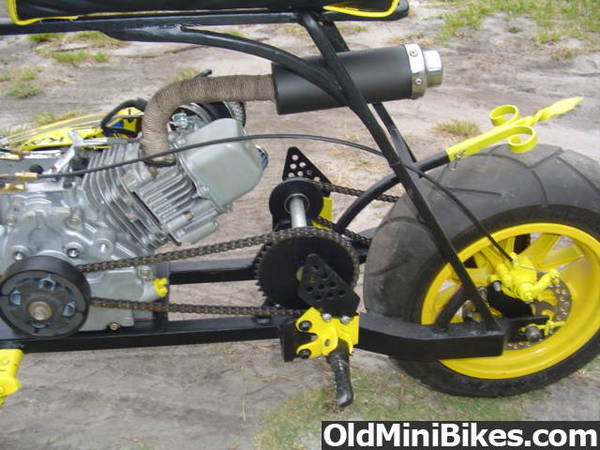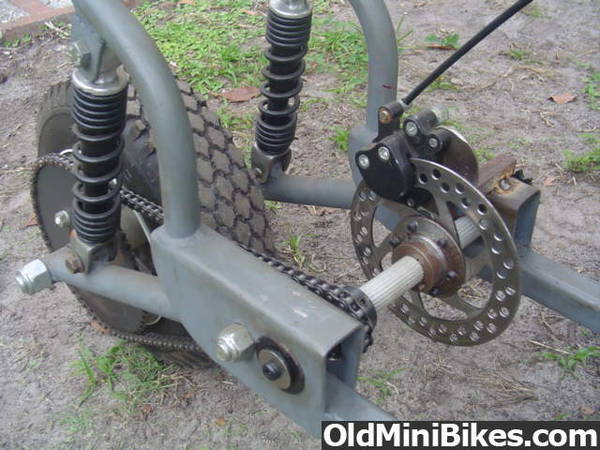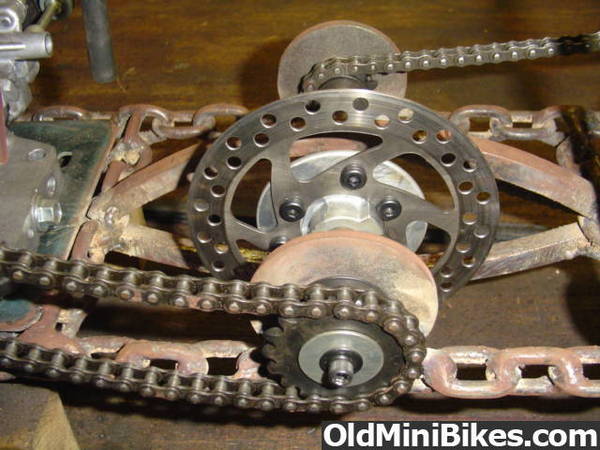Here's an example of a jackshaft on a bike that wouldn't work nearly as well without the jackshaft...
The jackshaft is used to adjust two main problem areas...gear ratio and sprocket alignment.
This bike has a 12 tooth front sprocket and a 40 tooth rear sprocket, both #35 pitch...without the jackshaft, this bike would have a top speed much faster than desireable, and wouldn't be able to handle any hills because low-speed operation is way out of the bottom of the powerband.
The 40 tooth driven sprocket on the jackshaft, combined with the 13 tooth drive sprocket on the other side basically halves the final gear ratio, allowing the bike to perform better while starting off from a dead stop and climbing hills, but top speed is also cut in half.
Years ago, I had a 3hp minibike (similiar to your 2.8hp) that used a jackshaft setup that allowed it to climb any hill I could find, but top speed was about 8mph, which sounds really slow, but I never took it out onto the street, and it worked like a champ out in the trails and woods, which is what I wanted.
A complete Azusa 5/8" jackshaft kit with 13t and 18t sprockets is about $30 at Northern Tools, and you would also need the $10 chain kit. This kit would need to be welded onto your frame, would make your bike about 1/3 slower, but better able to climb hills and take off from a stop.





 ..........................:thumbsup:
..........................:thumbsup: